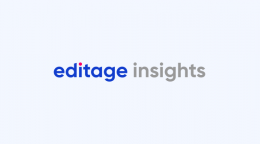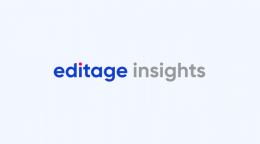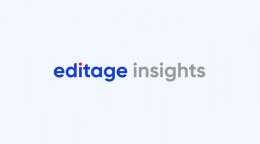Dealing with retractions: Journal’s responsibility in upholding research integrity

In 2023 alone, over 10,000 research papers were retracted worldwide, setting a new record.
- Nature
In the last twenty years, the academic community has witnessed a troubling surge in the number of articles retracted from scientific journals. This troubling trend is predominantly attributed to research misconduct, which includes data fabrication, plagiarism, and ethical violations.
At the same time, the rapid evolution and integration of Al technologies into research and academic publishing have brought about a transformative era, providing extraordinary efficiencies and insights. However, this progress has also introduced new ethical dilemmas, posing serious threats to research integrity—the widespread use of Al has given rise to advanced techniques for data manipulation, falsification, and plagiarism, raising crucial concerns about the robustness of the screening and peer review process. Prominent cases of misconduct, often fueled by the irresponsible use of Al tools, have exposed vulnerabilities in current regulatory frameworks. And in some cases, despite having checks in place, questionable research can still slip past them, and publishers and journals are faced with the eventuality of dealing with article corrections and retractions.
Retractions: not the villain they're made out to be?
More than a decade ago, the rising number of retraction reports ignited demands for improved detection of flawed research. Concerns about the integrity of science surged, primarily due to fraud being the leading cause of retractions. However, it has also been suggested that enhanced editorial oversight may account for the surge in retractions, indicating a scientific community dedicated to upholding publication standards. There have been calls for better accountability and diligence is gaining momentum, especially considering that the actual number of compromised studies likely surpasses the reported numbers. Some experts are even calling for a cultural transformation in how retractions are perceived—particularly when mistakes arise from honest and ethical intentions, such as a researcher choosing to self-retract upon discovering an error in their conclusions.
Retractions carry significant consequences for authors, journals, and public trust in scientific research. Regardless of the reasons behind them, these instances underscore the critical need for journals to adopt robust mechanisms within their workflows to proactively identify potential integrity issues. As the demand for increased accountability and transparency intensifies, we’re going through the best practices that journals can implement to effectively manage retractions.
Best practices for journals and publishers to deal with retractions
Here's a comprehensive overview of the best practices developed and outlined by the Committee on Publication Ethics (COPE).
Ensure timely publication: Academic journals must prioritize timely retraction notices to inform the community about inaccuracies, protecting the integrity of the scientific record and maintaining trust in research.
Make retraction notices accessible: By making these notices available, not just to journal subscribers but to everyone, journals can ensure that all stakeholders, including researchers, practitioners, and the general public, are informed about the accuracy and reliability of published work. Ultimately, unrestricted access to retraction notices will enhance informed decision-making and accountability in the dissemination of scientific knowledge.
Clearly identify the retracted article: To ensure clarity and proper acknowledgment, the retraction notice should include the title of the retracted article, and the names of its authors prominently displayed in the heading. Providing this information upfront is essential for transparency and maintaining the integrity of the academic record. It ensures that anyone referencing the article is immediately aware of its retraction status.
Provide an explanation: By clearly outlining the reasons behind retracting an article, the retraction notice helps readers comprehend the significance of the retraction and the potential implications for the field. Such transparency is essential for maintaining trust in the academic community.
Specify who is retracting the article: The retraction notice must clearly indicate the individual or organization responsible for retracting the article. Understanding who initiated the retraction is important for acknowledgment, benefiting both authors who admit errors and fellow researchers, showing that not all retracted papers are due to misconduct.
Maintain objectivity: It is essential that the retraction notice maintains a tone that is both objective and factual, ensuring that it accurately conveys the necessary information without introducing any biases or emotional undertones. Focusing solely on the facts surrounding the retraction allows readers to understand the context and reasoning without being swayed by subjective opinions.
Ensure the article is linked: It is essential that the retraction notice is linked to the retracted article in every possible instance, especially in all electronic formats where the article may be accessible. Providing direct links improves accountability, ensures that readers can easily find and understand the context of the retraction, and fosters transparency in the publication process.
Publish in all versions of the journal: It is essential that the retraction notice be published across all versions of the journal, including the print edition and the digital formats and on every online platform associated with the journal. Doing this helps ensure that all readers, regardless of how they access the journal, are informed about the changes made to the publications.
Acknowledge the retraction in electronic sources: It is essential to ensure that any retracted article is unmistakably flagged as retracted across all electronic platforms, including the journal's official website and various bibliographic databases. This clear identification alerts readers of the article's retracted status, preventing them from mistakenly citing or relying on the information within it.
Conclusion
Can technology be one of the more effective answers to the emerging research integrity challenges and preventing retractions due to misconduct? Recognizing the growing concerns, a rising number of service providers in the scholarly communication industry have developed technological solutions aimed at helping publishers detect and address misconduct right at the point of journal submission. For instance, tools like Paperpal Preflight for Editorial Desk can help publishers flag problematic submissions at the time of manuscript submission. By implementing such measures, publishers can enhance their editorial screening and peer review processes.
Publishers have a vital role in educating researchers about research integrity, ethical conduct, and the retraction process along with its consequences. As the number of retractions continues to climb, it is essential to tackle the underlying factors driving these trends, such as the intense pressure on researchers to publish and the potential exploitation by paper mills.
Comments
You're looking to give wings to your academic career and publication journey. We like that!
Why don't we give you complete access! Create a free account and get unlimited access to all resources & a vibrant researcher community.

Subscribe to Conducting Research













